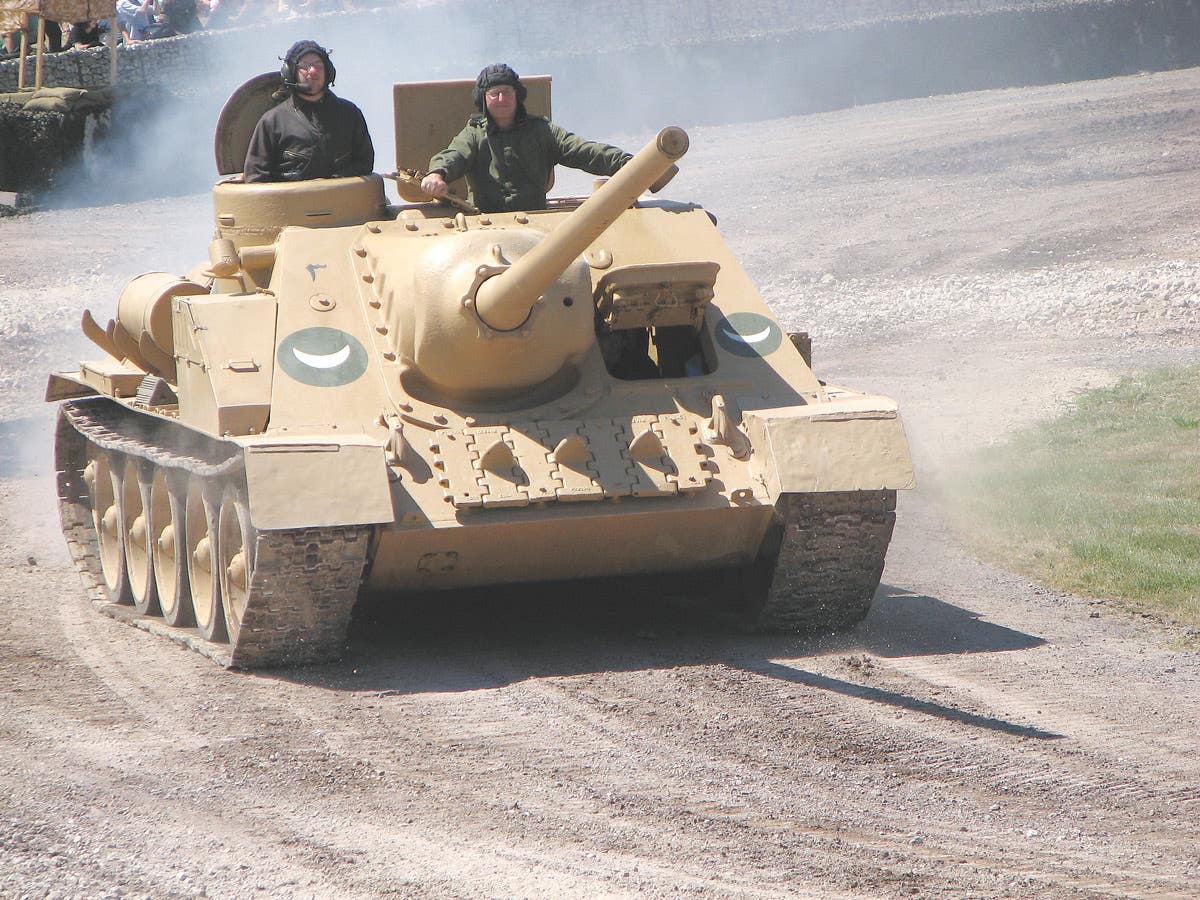A look at the Scammell Explorer
In the years immediately after the Second World War, the British Army had to adapt to meet changes which affected its operational commitment, new weapons and equipment and its overall…
In the years immediately after the Second World War, the British Army had to adapt to meet changes which affected its operational commitment, new weapons and equipment and its overall structure. The first changes came about in 1945 with the creation of the British Army of the Rhine (BAOR) as one of the three Western occupying powers controlling post-war Germany. This period would become known as the “Cold War” as a result of Russia’s creation of the so-called “Iron Curtain”. The second major change came in 1949 with the creation of the North Atlantic Treaty Organisation (NATO), to which Britain was a signatory along with America and several other countries.
In 1950, the Korean War erupted. It would last until 1953 — a time during which more changes would be ushered in along with the introduction of new weapons and vehicles. The United Nations had been formed in 1945 and many of the member states, including Greece and Belgium, sent military units to serve in the war against the Communist forces. To meet this commitment, the British government used many National Servicemen alongside regular troops, but it was also obliged to make adjustments to some overseas postings to concentrate on its primary role in Central Europe as part of NATO. National servicemen would also be deployed to serve in other emergency areas such as Kenya, Suez and Aden.
At the time, the British Army had already been engaged against Communist- backed rebel forces in Malaya since 1948, but with the outbreak of the Korean War emphasized the urgency for modern vehicles to replace those vehicles which had served through WWII, such as the Scammel Pioneer. The Pioneer had served throughout WWII, but by the late 1940s it was obvious that its 6x4 drive capability and 85-bhp 4-cylinder gas engine would not be compatible with the changing shape of post-war military developments. To put it bluntly, the Pioneer had reached the end of its service life and the military needed a replacement.
With Scammell’s record for supplying the military with reliable heavy vehicles, it was only natural that the British Army should approach the company for a vehicle to replace the Pioneer. The design team at the company’s Hertfordshire-based production plant in Tolpits Lane, Watford, drew on lessons learned and previous experience to come up with a 6x6 design that would come to be known as the “Explorer”. Developers were confident it would meet the army’s needs for a recovery vehicle capable of handling the new, heavier tank designs entering service, such as the Centurion and Conqueror. It would go on to become one of the best vehicles to enter post-war service with the British Army and be used during the later stages of the Korean War.
At first sight, the Explorer, which would later be given the military designation of FV11301, exhibited more than a passing resemblance to the Pioneer, with a “squared-off” shape and large size. Indeed, it shared several common features with its earlier counterpart, such as having the wooden-panelled rear body, central-pivot front axle traverse spring, A-frame walking beam and rear gear case.
It was what lay underneath the engine hood that most mattered. At 200-hp, the engine had more than twice the power of the Pioneer and was designed to operate in temperatures ranging from -10 degrees Fahrenheit to +125 degrees Fahrenheit. The driver’s cab was spacious, with good visibility and sufficient headroom for an average-sized man, say 5 foot 10 inches, to stand upright.
The Explorer may have looked similar in appearance and been influenced by the Pioneer, but there the similarity ended. The Explorer was dubbed a “Heavy Breakdown Tractor” with each vehicle being fitted with a rear-mounted crane and winch. With 450 feet of 7/8-inch steel cable, it could tackle recovery roles of most vehicles. Front and rear-mounted tow hooks allowed it to recover vehicles either forward or in reverse.
The first series production series contract was for 125 vehicles, the first of which entered service in 1950. Six further contracts would be awarded to Scammell, amounting to a production run of 1,500 vehicles. From this number 726 were for service with the army and the Royal Air Force, both of which would require the services of such a powerful vehicle. The RAF is known to have designated at least nine of their Explorer vehicles for use in the role of heavy towing tractors to move the larger aircraft around airfields. Others were sold to overseas users, including the New Zealand army.
The Explorer was produced in two versions, the first series being the Mk I, which was the early first contract model between 1949 and 1950. These featured minor details such as smaller headboards on the driver’s cab and other minor details like an extra tank for the air system. These vehicles had sprung drawbars front and rear for the tow hitches which were mounted on leaf springs. Later, the Mk II Explorers had NATO hitches fitted front and rear which were mounted solid to the cross members. These vehicles were used by the Royal Electrical and Mechanical Engineers, REME, regiment of the British Army which was responsible for recovering vehicles in all deployment areas, including the NATO zone of West Germany as it was known at the time.
The Explorer remained in service with the British Army into the late 1980s, by which time new, heavier vehicles were entering service, such as the “Warrior”, weighing in at 25 (long) tons and “Challenger I” main battle tank weighing between 62 and 70 (long) tons depending on the level of armour protection fitted. By this time the Explorer was reaching the end of its operational service capacity and these new vehicles were beyond its capability. The Explorer was gradually phased out of service, with many of them being sold off to recovery companies, haulage businesses and some to civilian owners, who now display them at shows. They were replaced by another Scammell design, the “Commander”, which reverted to 6x4 drive as on the original wartime Pioneer design.
A dedicated website for Scammell vehicle enthusiasts, www.scammellregister.co.uk, has been established where owners and enthusiasts can ask questions and seek advice. Examples of the Explorer come up for sale fairly regularly on specialist auction sites and there is a good supply of spares still available. Some owners have replaced the original Meadows engine with a comparable Cummins type, which keeps them on the road. With no power steering, it can be hard work driving an Explorer and the noise in the driver’s cab is loud, but owners do not complain and they enjoy the challenge of having an example of such a redoubtable vehicle.
Saving ‘Lady Polly’
The vehicle registered as YSY250, nicknamed “Lady Polly”, was acquired by its present owner in May 2017. He has researched into its background history and even spoken to a previous owner. Built in 1951, Lady Polly is a Mk I Explorer it is known to have had its winch rebuilt in 1953 and in December 1958 it underwent a complete overhaul while still in military service. These details and other points of the vehicle’s history came to light when the owner contacted the military at Deepcut in Surrey to request the vehicle’s service card history. In September that year he received documentation which revealed the vehicle’s military registration number as being 01BD84 and was based at Ashchurch Camp in Tewkesbury, Gloucestershire, for some of its service life.
In 2019 the vehicle began emitting noises which gave cause for concern. Further investigation showed drive to the rear axle had failed, which, in turn, had sheared the oil gear drive. Before the axle could be removed to be replaced, the sprag had to be taken out, but it was welded and bolted in place. A previous owner explained he had encountered a similar problem when he had the same vehicle. Since then, the current owner has replaced a new floor in the driver’s cab on the passenger side and replaced all the woodwork on the rear body, which he fitted in a workshop. He has also cleaned up all the metalwork behind the cab using shot-blast and resprayed it. Another refurbishment project to the “Lady Polly” Explorer included fitting a new gear box. Nobody ever said owning an Explorer was simple, and owners of Scammell vehicles are in a select group all their own.








